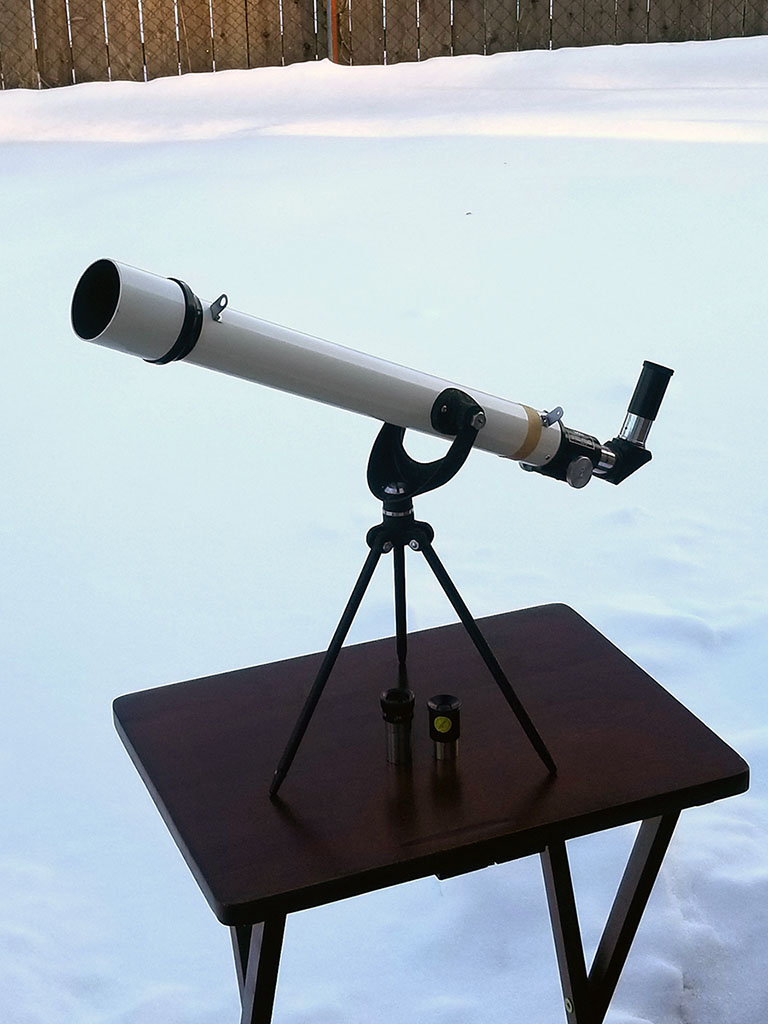
Telescope: Meade 12” LX850 ACF @ f/8, Orion Atlas EQ-G
Camera: ZWO ASI071 MC Pro, -10C, Gain 200
Filter: Orion Imaging Skyglow Filter
Guide scope: Astro-Tech 60mm, ASI290MM Mini, PHD2
Exposure: 27x240sec, saved as FITS
Darks: 32x240s, saved as FITS
Flats: 32×0.2sec, Tee shirt flats taken at dusk
Average Light Pollution: Red zone, Bortle 8, poor transparency, haze
Lensed Sky Quality Meter: 18.3 mag/arc-sec^2
Stacking: Mean with a 2-sigma clip.
White Balance: Nebulosity Automatic
Software: Nebulosity, Deep Sky Stacker, Photoshop
NGC 2841 is a delicate, tightly wound spiral galaxy in western Ursa Major. Like many galaxies, only the core is readily visible from suburban skies, but even that can be quite beautiful. As I relax at the eyepiece and study the field the core takes on a soft glow resembling pearl; the combined radiance of millions of suns.
NGC is currently well placed high in the northeast during the early evening high overhead before midnight.









Recent Comments